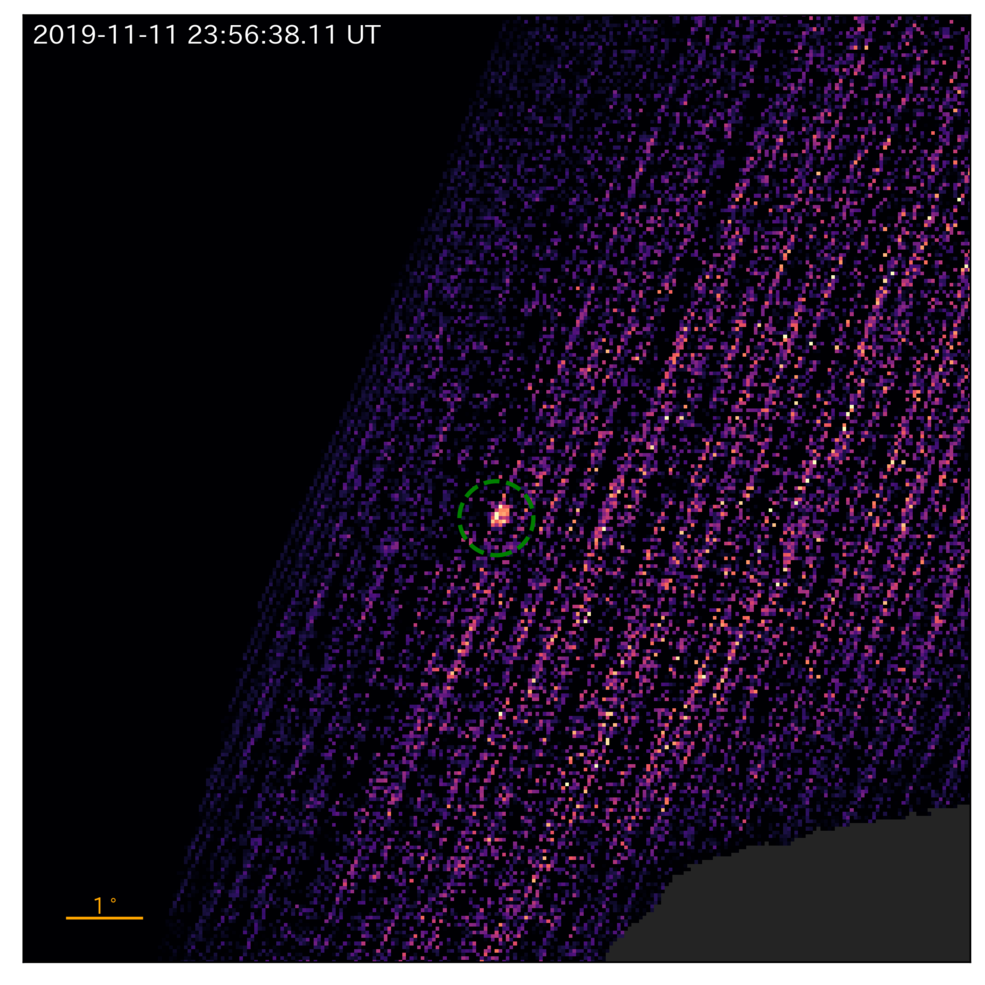Surprise! Students get an unexpected glimpse of a black hole 30,000 light-years away
They used a NASA asteroid probe to do it.
Peering into deep space with an instrument they built, a group of students and researchers caught a surprising glimpse of a newly discovered black hole 30,000 light-years from Earth.
In the fall of 2019, students and researchers from the Massachusetts Institute of Technology and Harvard University were working with an instrument that they designed and now operate, the Regolith X-Ray Imaging Spectrometer (REXIS), which is on board NASA's OSIRIS-REx spacecraft. While using the shoebox-size instrument to observe the asteroid Bennu, the spacecraft's destination, the team made an unexpected detection: a new black hole in the constellation Columba.
REXIS measures X-rays that are emitted from objects like Bennu in response to solar radiation. On Nov. 11, 2019, the collaborative group of researchers and students spotted X-rays radiating from a point off the edge of Bennu.
Related Quiz: How Well Do You Know Nature's Weirdest Creations?

"Our initial checks showed no previously cataloged object in that position in space," Branden Allen, a Harvard research scientist and student supervisor who first noticed the radiation in the data, said in a NASA statement.
Upon further analysis, the team found that the X-rays seen off the edge of Bennu were coming from a newly flaring black hole X-ray binary. The black hole, known as MAXI J0637-430, was discovered just a week before these observations by researchers using Japan's MAXI telescope, which operates from aboard the International Space Station. The X-rays were also detected by NASA's Neutron Star Interior Composition Explorer (NICER) telescope, which is also on the space station.
Although both telescopes were able to detect the X-rays from low Earth orbit, REXIS detected the event while millions of miles from Earth. This observation marks the first time that such an outburst has been detected from interplanetary space, according to the statement.
Get the Space.com Newsletter
Breaking space news, the latest updates on rocket launches, skywatching events and more!
"Detecting this X-ray burst is a proud moment for the REXIS team. It means our instrument is performing as expected and to the level required of NASA science instruments," Madeline Lambert, an MIT graduate student who designed the instrument's command sequences (which ended up revealing the black hole), said in the statement.
The REXIS instrument, in addition to observing the cosmos, provides an opportunity for students and young scientists to get hands-on experience. To date, nearly 100 undergraduate and graduate students have worked on the REXIS team.
- Stephen Hawking's Best Books: Black Holes, Multiverses and Singularities
- The Strangest Black Holes in the Universe
- 6 Everyday Things That Happen Strangely in Space
Follow Chelsea Gohd on Twitter @chelsea_gohd. Follow us on Twitter @Spacedotcom and on Facebook.
OFFER: Save at least 56% with our latest magazine deal!
All About Space magazine takes you on an awe-inspiring journey through our solar system and beyond, from the amazing technology and spacecraft that enables humanity to venture into orbit, to the complexities of space science.
Join our Space Forums to keep talking space on the latest missions, night sky and more! And if you have a news tip, correction or comment, let us know at: community@space.com.

Chelsea “Foxanne” Gohd joined Space.com in 2018 and is now a Senior Writer, writing about everything from climate change to planetary science and human spaceflight in both articles and on-camera in videos. With a degree in Public Health and biological sciences, Chelsea has written and worked for institutions including the American Museum of Natural History, Scientific American, Discover Magazine Blog, Astronomy Magazine and Live Science. When not writing, editing or filming something space-y, Chelsea "Foxanne" Gohd is writing music and performing as Foxanne, even launching a song to space in 2021 with Inspiration4. You can follow her on Twitter @chelsea_gohd and @foxannemusic.










